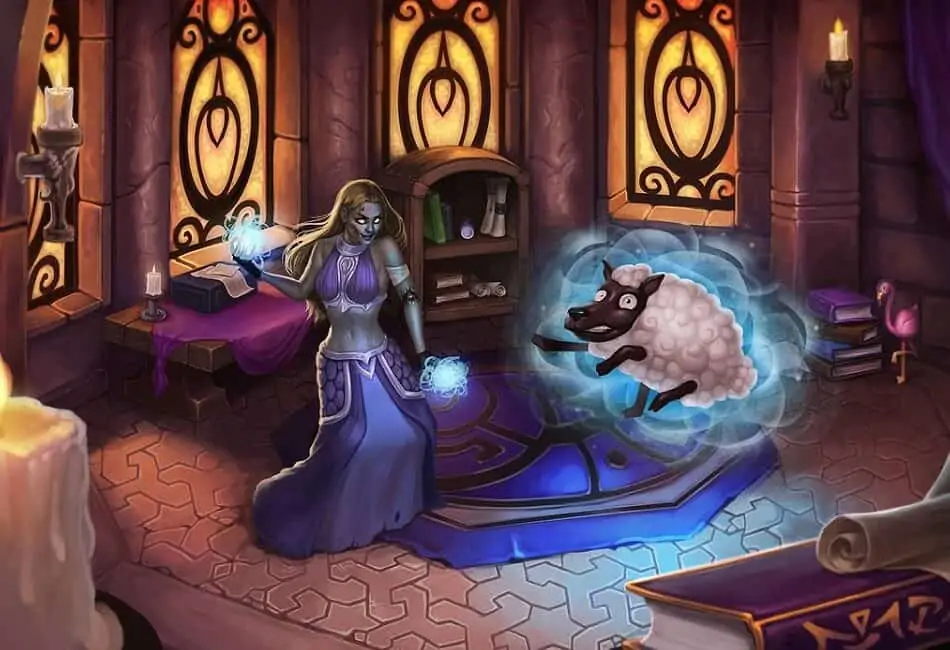Polymorph has to be one of the most well-known spells in the whole world of DnD. I don’t think I have seen a campaign where there wasn’t a monster, player, or NPC that used polymorph at some point. It is more than deserving of having its own in-depth Polymorph 5e DnD guide that explains what it is and what kind of creative situations it is useful in.
Most of you will know polymorph as this wacky spell that throws a wrench in the plans of your poor Dungeon Master more often than not. It is also very powerful and is amazing if you are a creative player.
If you walk the path of the arcane arts, it is almost a given that polymorph will be in your arsenal.
What Exactly is Polymorph in 5e Dungeons and Dragons
Let’s go to our Player Handbook, and we are going to flip to page 266. So this is a transmutation level 4 spell, and like most spells, it has a casting time of a single action. The range is 60 feet.
For this spell, you are going to need a Caterpillar cocoon. This is a component requirement. Lastly, the spell is a concentration spell and lasts one hour.
Normally, a concentration spell means that the moment you cast another spell, the spell ends. In the case of polymorph spells, you can maintain the spell when you cast another spell. So no worries about that.
Polymorph gives the caster the ability to transform a creature that is within your visual range into something else. If the creature does not want to be transformed, it has to succeed in a WIS saving throw. There are two types of creatures immune to this. The effect does not work on any creature that has no hit points left, and a shape-changer also is immune to the polymorph spell.
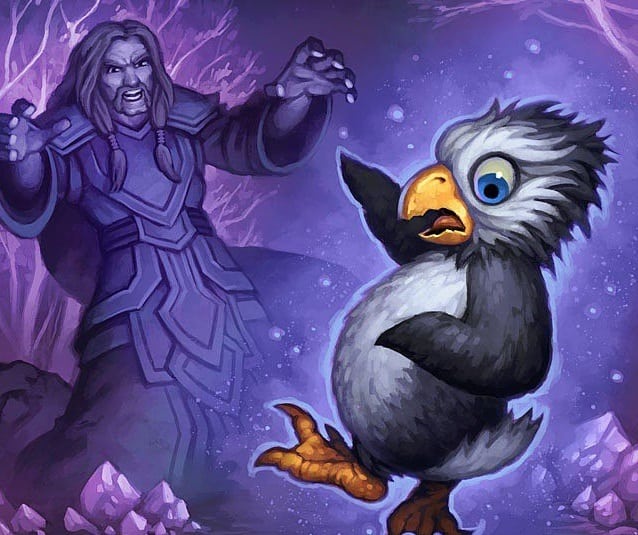
The creature is transformed into its new form for the duration of the spell or until its hit points get brought down to 0 hit point or if it dies. You are not entirely free to choose the form of the creature that the target will polymorph in. The challenge rating has got to be equal to or less than the creature that the target is.
Your target will regain the alignment and personality it had in its former form. However, the stats are replaced by those of the beast you have chosen. If you have not brought the creature to 0 hit points or killed it, it will regain all the hit points it had when it gets returned to the former form.
When your target has transformed, it is bound by the nature of the new creature it is now. That means it has the same offensive power, is just as strong defensively, and is the same in combat.
In addition to that, the transformed creature can no longer speak and has no ability to cast spells, nor can it take an action that requires hands or using speech. It also has no longer access to a magic item if it had one in its inventory.
What Are Some Good Picks to Polymorph Into?
Good news for the people who want to get creative, the rules state that you can pick the form of any beast you want. However, you do need to think about the challenge rating Limitation and, if there is no challenge rating, the level restriction.
To be clear, a beast is not the same as a creature. For example, a vampire is not a beast, nor is a ghoul. They are not classified as such. A beast is, for example, the Giant Ape or a Giant Bat.
So if you wanted to change something into a dragon, I have to disappoint you as they are classified as dragons. There are still multiple uses for the spell. If you want to do some espionage or go underwater, polymorph is a pretty useful thing.
I have used this spell extensively as a player, but I have come across it even more as a DM. Let me tell you, players really get creative with this one.
To be clear, if you don’t know this already, in DnD you can choose yourself as a target for spells, and polymorph is no exception to that.
Here are my favorite 5 monsters to polymorph into:
5. Tyrannosaurus Rex
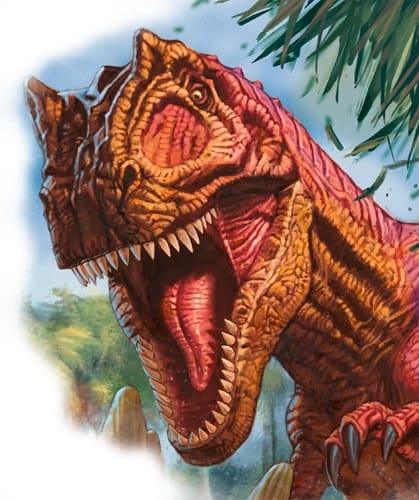
Maybe a bit surprising that the Rex comes in at number five. I am sure that a lot of players will have this on number 2 or even number 1. The T-rex deals some massive damage and has a devastating multi-attack that will cause a lot of opponents serious trouble.
The one big downside of the T-rex is that it only has 2 intelligence. Also, I have noticed that a lot of DM’s ban this beast as it does kind of break the immersion and feels a bit out of place.
4. Giant Shark
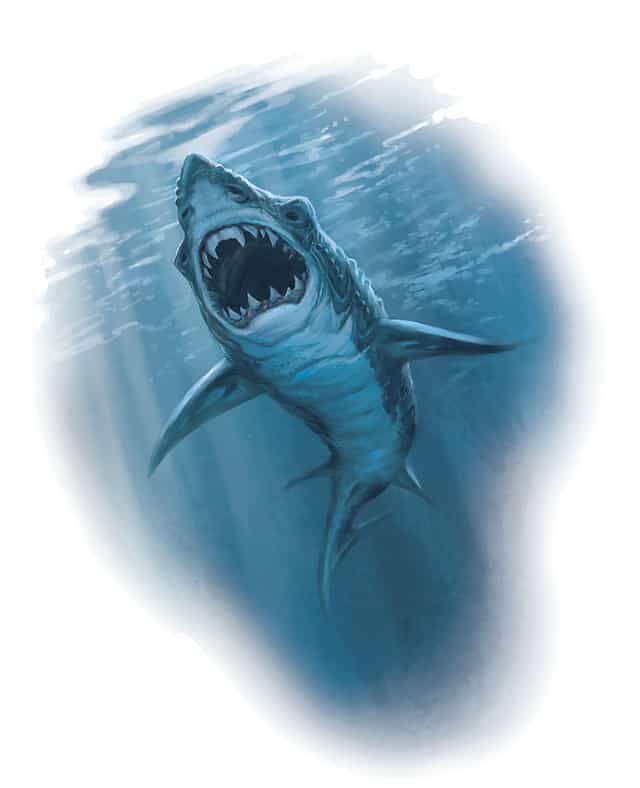
If you are fighting around a body of water, the Giant Shark is going to be a great pick. I love the fact that it has some pretty decent stats and offers a unique experience as opposed to some other monsters.
It can breathe underwater, is pretty fast in the water, and has a nice 126 Hit Points. It also has the blood frenzy ability that makes it a bit more powerful.
The big problem with a Giant Shark polymorph transformation is that it is really niche. You need to be in the water, and that is pretty rare.
3. Giant Elk
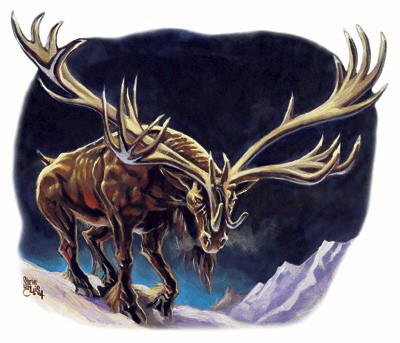
A Giant Elk is awesome to use. It is pretty fast and is a large monster. This makes it pretty easy to travel overland. You can also take your party along with you. They have an INT score of 7. That is pretty good for a beast.
The Giant Elk can understand the common, which is pretty useful. It has a nice Ram Attack with a range of 10 feet.
I think the Giant Elk is a great option for travel but lacks the combat skills to be very useful.
2. Giant Owl
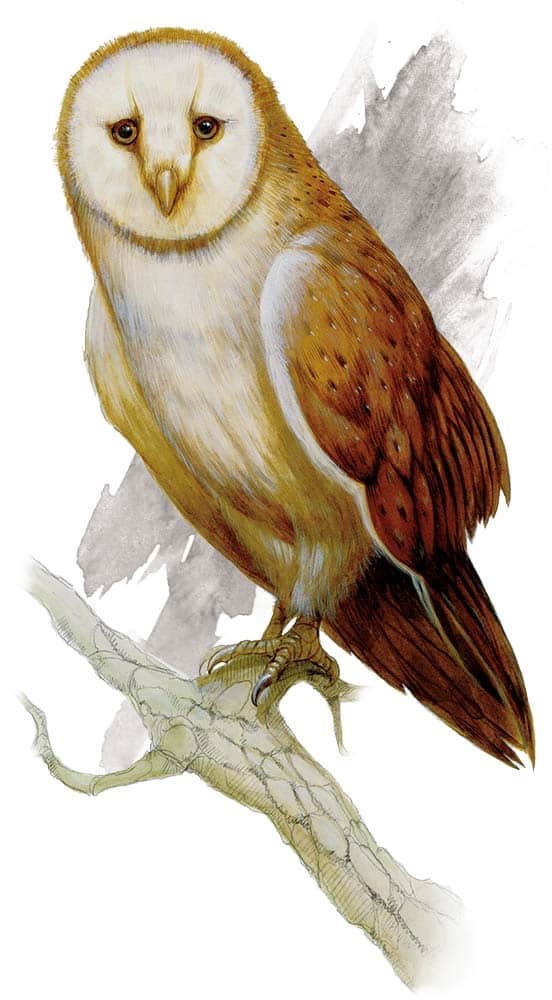
If you want to scout, the giant owl is amazing. It has an amazing long range of sight when using Darkvision. Their combat abilities are pretty bad, so make sure you are not going to be attacked. It’s low health, plus it’s very low AC is going to cost you if you are not going to be careful when you are in the giant owl form.
With an INT of 8, the giant owl understands the common language. This intelligence score is a vital asset to remember details when scouting. Due to the size of the Owl, you can take an ally on your back that helps you scout or protects you.
See also: Comprehensive Owl 5e Guide.
1. Giant Ape

I am pretty sure that I am not alone with this as my number one pick. If you want to fight the Giant Ape is pretty much the best choice you have. Okay, its AC is not optimal, but it does have a massive health pool that helps to compensate for that.
There are two things that make this strong: First is its multi-attack with a range of 10 feet. Second, it has an amazing 50 feet range rock-throwing attack that can deal some very decent damage without you having to get close.
What are the worst forms to polymorph into?
Worst is a relative term. You will always find a very niche use for a beast. A rat will be better to traverse the sewers undetected than a T-rex. However, the less use it has, the worse a polymorph form is, in my opinion. Here are the three that I see used the least.
Frog
You are better off picking the rat if you want to use a disabled form. There are also better scouting forms, so the frog has no real use.
Vulture
There just is no reason to ever pick vulture over the giant owl. Maybe if you are in a region where owls are rare, it is a possibility, but I doubt it.
Baboon
The baboon is just worthless for almost anything I can think of. You can not use it as a disabled form, as it is too mobile.
Polymorph: One of the most hated spells of Dungeon Masters, for a reason
Polymorph is the spell every caster needs to have in its arsenal if they are able to learn it. It is fun, it throws a wrench into the plans of your dungeon master, and it gives a very welcome change of pace.
If you are a DM like me, you will have to plan for players using this spell. However, if you have some monsters that can use the polymorph spell, it is a great idea to prepare and surprise your players by changing them into useless monsters.

Some DM´s have put some limitations on the spell. Sometimes they nerf it a little, but the most often nerf¨ I see is banning the T-Rex. This is mostly done for immersion reasons, as a huge T-rex running around in a European-inspired fantasy world is just weird, even for DnD!
There are plenty of questions about the polymorph spell. This is why I have made this FAQ list to at least address some of the more common ones.
My Favorite Polymorph Tactics to Use
Polymorph has a lot of amazing perks and strategies that you can use. The spell is one of the best in the whole Dungeons and Dragons universe if you are a creative person.
Polymorph the Enemy
This is a pretty obvious one, but there are a lot of horrible beasts you can polymorph your opponent in. This is called a disable. If you change them into a rat, they all of a sudden are a lot less of an opponent to handle.
Infiltration and Scouting
Is there an enemy camp ahead of that you want to check out? Why not change into an owl and fly over it at night? Maybe you can find a small hole in the walls while being a rat. This way, you can check out the place and know what you are dealing with. Just remember DMs, the player their intelligence is the same as the beast. So a rat won’t remember a lot of details, while the owl will.
Escape or Prepare
Turning your enemy into a very weak beast gives you a chance to catch your breath and prepare for the battle ahead. You can also turn them into a slow animal like a frog and just get away from them if they are a lot stronger than you imagined them to be.
Frequently Asked Questions about the Polymorph spell
Question: I want to change into a huge creature in a small space, what will happen?
Answer: This will likely be up to your Dungeon Master. I haven’t been able to find any official rules on this. If you get swallowed by a monster, and you turn into something huge like a Giant Ape, should it die? I just straight out say that the polymorph spell does not work if you do not have the space to transform comfortably. Other DMs might find a different solution for this problem.
Question: Can you polymorph something that has already been polymorphed?
Answer: Let us imagine the following scenario: An enemy goblin wizard has turned you into a rat. Your ally turns you into a Giant Owl next, while you are still in rat form. Is this possible?
There is quite a discussion about the implications of this. My take is that the Giant Owl form will overwrite the first polymorph into a rat. So when your hit points drop down to 0, you revert to the original form that you had before any polymorph spell hit you.
The other school of thought is that when you get your hit points to 0, or the second caster breaks his concentration, that you go back to the rat form first.
There are no official rules on this in 5e, so this is going to depend on your dungeon master.
Question: What is the difference between regular and True Polymorph?
Answer: True Polymorph is a lot stronger and has more variety than its regular version. Not a big surprise if you know that True Polymorph is a level 9 spell, while Polymorph is only level 4.
Unlike the regular version, if you concentrate on it for an hour, the spell lasts until it is dispelled. The target’s transformation is also not restricted by just beasts. You can change a creature into an object, or an object into a creature.
Question: I just polymorphed, what abilities can I still use?
Answer: There are no abilities that will carry over. While the spell is a bit unclear about this, you will lose your racial threats and only have the powers of the beast you are switched into. Just have the stat block ready from the monster manual when you polymorph, so that is how strong you are now.
- Monks 5e Guide: How to Play as a Monk in D&D - September 13, 2021
- DnD Hobgoblin Guide [Creatures and Playable Race] - September 9, 2021
- The Ultimate DnD Yklwa 5e Guide: Everything You Need to Know - September 5, 2021

